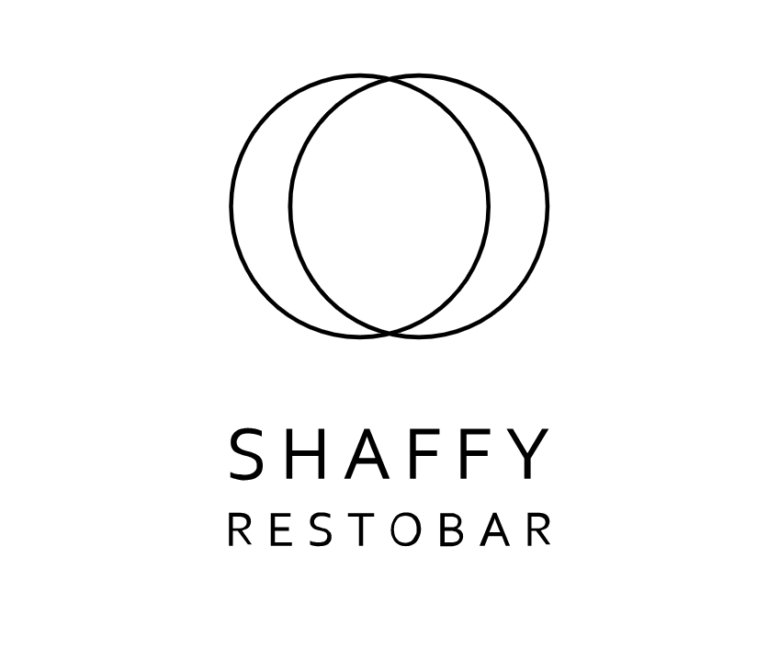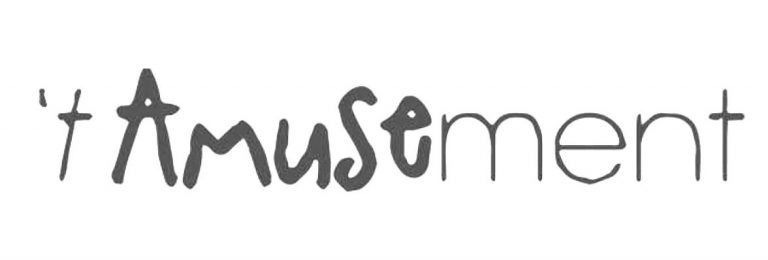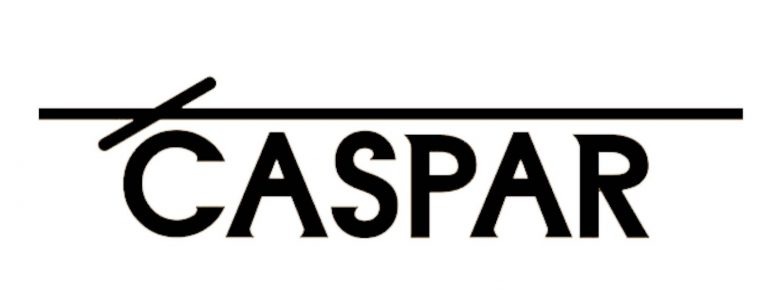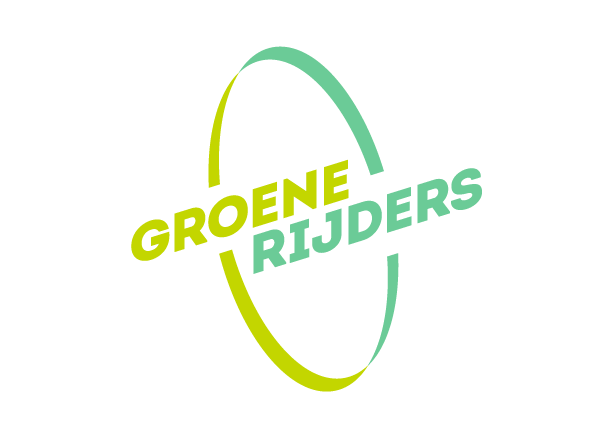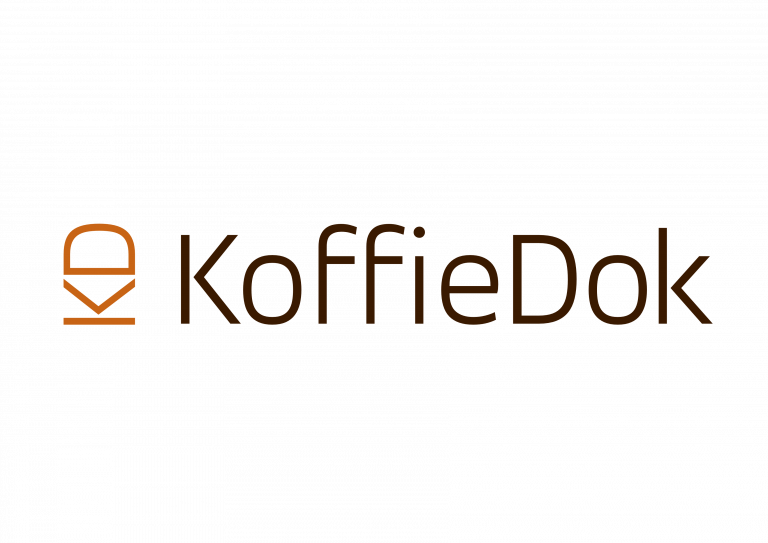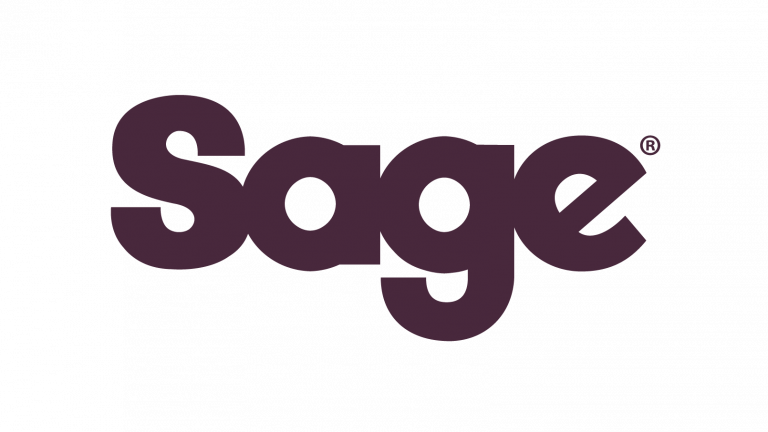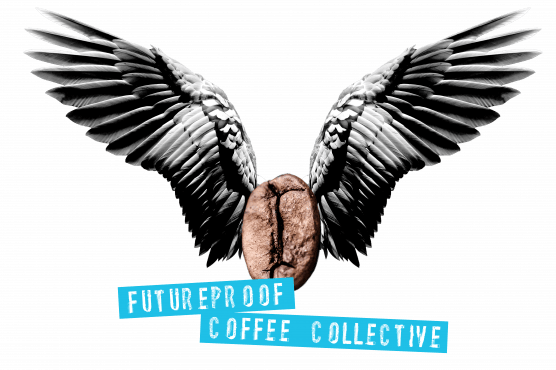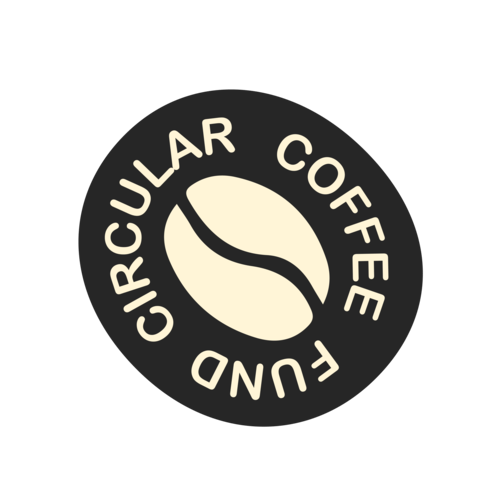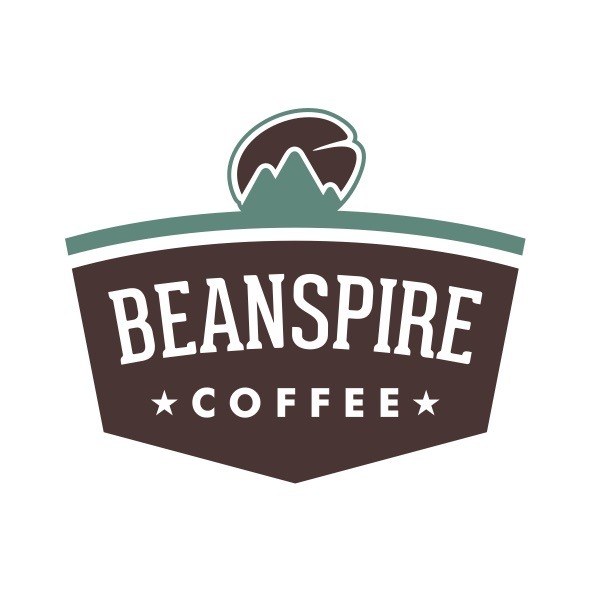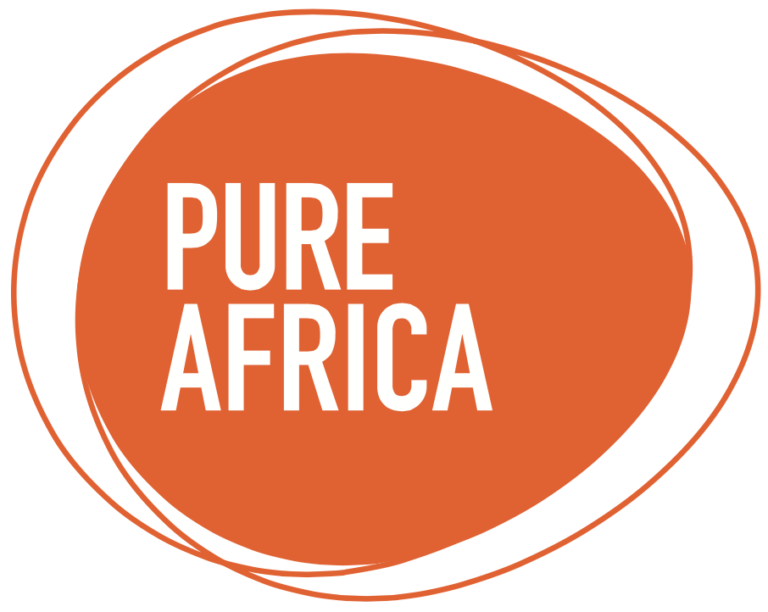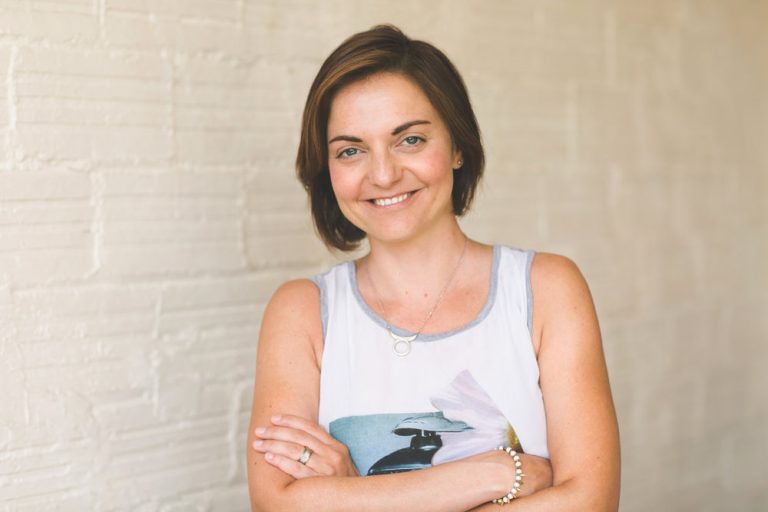
In this first episode I am talking to Sara Morrocchi from VUNA Origin Consulting.
Sara is a strong Italian lady with a boatload of coffee knowledge and is one of the initiators of a coffee project in Myanmar. A project in which opium farmers in the region of Hopong were trained and educated to grow a high grade specialty coffee. With the help of Sara, these coffees have found their way to the markets that value the quality and effort of this particular initiative.
In this episode we discuss the construction of the global coffee price, farming options, certification programs and of course we’re discussing the work Sara did in Myanmar.
I have known Sara for a few years now and can tell she is a highly skilled and knowledgeable person and of great value to the coffee value chain. She has the ability to deconstruct difficult matters into understandable chops making people and projects more susceptible to change.
Listen to this episode on Spotify:
Related product:
DATE
June 4, 2020
DURATION
1h 14m 36s
2 SPEAKERS
Jeroen Brugman, Sara Morrocchi
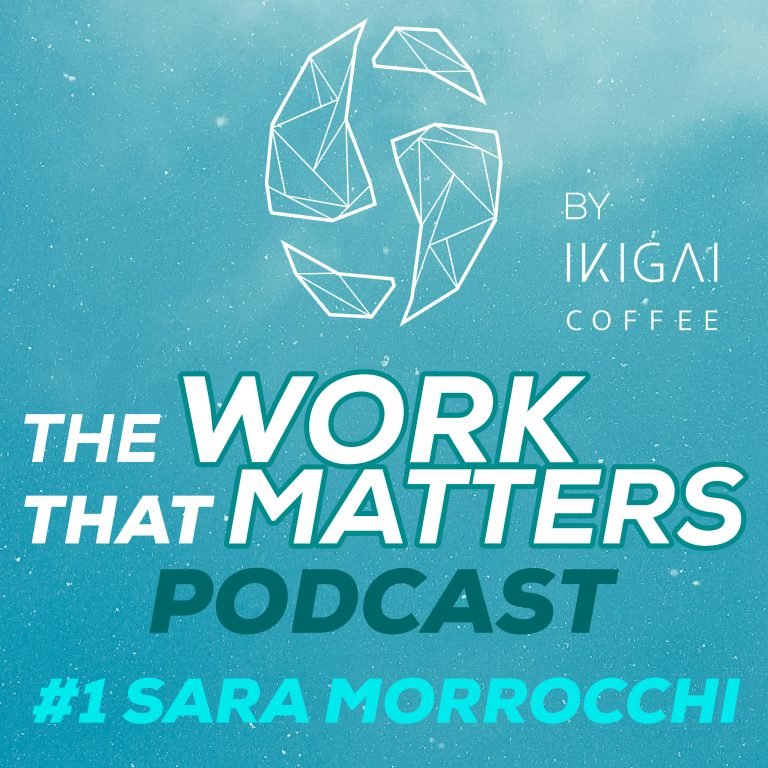
Jeroen Brugman: [00:00:00] Welcome to the Work That Matters podcast by IKIGAI COFFEE. My name is Jeroen Brugman and I’m your host talking to the people behind the work that matters. If you want to find out more about this episode or any other episodes, please visit www.ikigai.coffee and I hope to see you there.
Jeroen Brugman: [00:00:22] So, ladies and gentlemen, welcome to the first podcast. My name is Jeroen Brugman and I’m the owner of Ikigai Coffee and I’m trying to bring more transparency and more connectivity throughout the coffee value chain. And today, I have a guest on my podcast and she’s the first guest. Her name is Sarah Morrocchi. I’ve known Sarah for a couple of years now already. She was born in Italy, Turin. Studied philosophy and politics in the U.K. and had a master’s degree in peacekeeping management. I’m pretty curious what that actually encompasses. She’s a certified Q-grader, certified by the Coffee Quality Institute, worked as the global supply chain director at Sustainable Harvest, an organization which name says quite enough. She was one of the main consultants working on a project for the Winrock Foundation in Myanmar. And we will elaborate a little bit on that or a little bit, we’ll go into depth on that subject. She’s currently the owner of VUNA Origins consulting, making coffee equitable and sustainable. She’s a true coffee value chain expert. I’m really proud to have her on this show as a first guest. I can say, in short, she is a very kind little lady with a big voice and a boatload of knowledge about coffee and how to organize and improve the specialty coffee supply chain. So, Sara, welcome. On the first episode.
Sara Morrocchi: [00:01:58] Yay! Thank you Jeroen. Thanks for having me on your first podcast. Really exciting.
Jeroen Brugman: [00:02:03] So good to have you here. We’ve had some experience on podcasting before.
Sara Morrocchi: [00:02:08] Correct.
Jeroen Brugman: [00:02:09] Together.
Sara Morrocchi: [00:02:10] Yes. That was fun.
Jeroen Brugman: [00:02:11] That was fun. It was I think it was a year ago. I helped you out with a recording of a Myanmar podcast as well. Who were interviewed? Koko Win And who was the other?
Sara Morrocchi: [00:02:26] April.
Jeroen Brugman: [00:02:26] April! About the project you did in Myanmar? We will elaborate a little bit more about that later on. But it is a really impressive project. So I’m currently offering the coffee from Myanmar. And to be honest, I’m drinking it right now.
Sara Morrocchi: [00:02:46] Wow, that’s great.
Jeroen Brugman: [00:02:49] So my question to you, my first question is, are you drinking coffee right now?
Sara Morrocchi: [00:02:54] I am. Yes, I am drinking coffee.
Jeroen Brugman: [00:02:57] And what coffee are you drinking.
Sara Morrocchi: [00:02:59] I’m drinking Burundian coffee and I, I got the bag from my CoffeeVine subscription.
Jeroen Brugman: [00:03:07] Nice. So Coffee Vine that offers multiple roasters in one box.
Sara Morrocchi: [00:03:13] Yes.
Jeroen Brugman: [00:03:14] How many did you have this time. Is three or four. Three.
Sara Morrocchi: [00:03:17] I think my subscription now is one because I have multiple subscriptions. So I tried to work with different subscription providers. So I get one from Coffee Vine. I get another one from Shokunin as well.
Jeroen Brugman: [00:03:32] Ah nice! From Jelle, A really nice guy. I saw your your presentation of your RECO presentation. There’s a lot going on in the world of coffee at the moment in the value chain. And there’s a big elephant in the room. Can you tell me what is the big elephant in the room in the room of coffees.
Sara Morrocchi: [00:03:57] I guess since I last spoke in RECO, I’ve come to the realization that there’s multiple elephants in the room. Some bigger than others. Specifically on my RECO talk, I was addressing the consolidation, the market consolidation of the specialty coffee industry. And at that moment in time, which I believe was between 2014, 15 and 16, we’ve seen a very aggressive consolidation strategy that basically involved a lot of interesting and famous companies, sort of the pioneers of specialty being acquired by JAB, the investment company. And I think that while on the one hand we, you know, some were celebrating that these brands finally received investments to do bigger and things, so they they portrayed it as a way to scale impact, because now they just had an injection of funds. On the other hand, a lot of people were skeptical whether this big money would change the mission and the values of our favorite roasters. So that was that was basically what what that elephant in the room was back then.
Jeroen Brugman: [00:05:28] Yeah, it can do a lot of good, but it can also do a lot of harm. Yeah. It’s like it creates a lot of possibilities to to increase impact and to increase coffee quality. But it can also be a big limitation of progress.
Sara Morrocchi: [00:05:45] Yeah. Because all of a sudden, you know, you’re accountable to somebody else. When you when you received investments or your acquired you know, to a certain extent you lose part of your freedom to do what you want. And I think that companies, you know, they those companies started because they wanted to make a change in coffee and they wanted to make it better.
Jeroen Brugman: [00:06:11] Yeah. Yeah. I can I can relate to that. They started as mission driven companies and now they’ve been acquired. They can still have a mission, but there’s also other benefits that are involved now. And that’s simply about the numbers, you know. So that’s. Yeah. So what is what is your finding since you spoke about the elephant in the room in your RECO presentation? That’s two years ago, I think. Three years ago.
Sara Morrocchi: [00:06:41] Yeah. Must have been almost four years ago. Yeah.
Jeroen Brugman: [00:06:44] It was in Dublin right? The World of Coffee Yeah?
Sara Morrocchi: [00:06:45] Yeah. I presented in Dublin and that was the elephant in the room and then I presented again in Budapest, but that was strictly on price risk management. So the Dublin talk was in 2016.
Jeroen Brugman: [00:06:58] 16 already?!
Sara Morrocchi: [00:06:59] Yeah. I remember because it was the time when we found out that the UK voted for Brexit. So it was it was that year because I remember a lot of the inflation roasters were really gutted that they were gonna have to get out of the EU. And then, yeah, that was that, that was I think it was 2016.
Jeroen Brugman: [00:07:20] Wow, it’s so quite interesting in 2016. I was in coffee as well back then, but back then I was in the middle side of the market. There was no conversation at all about the price crisis initiative or the elephant in the room. There were no discussions at all. So that is what is interesting. You were one of the first. I think that were involved in this.
Sara Morrocchi: [00:07:51] Yeah, I think that. It was it was definitely discussed in small circles and people obviously knew what was happening. But I think that the we did not have a an industry discussion about it. And it was kind of all hush hush convos in private conversation.
Jeroen Brugman: [00:08:11] So that was four years ago. You just mentioned the of course, there it is again, the big elephant in the room or the multiple elephants in the room. Has there been a lot of change since then? And is has the elephant in the room grown or or is it shrinking or are there more elephants coming into the room and does it still fit?!
Sara Morrocchi: [00:08:35] Yeah, that’s a good question. I feel that consolidation is still happening and going on. And that’s. That hasn’t changed. But what I think has improved to a certain extent is the ability of the value chain partners, whether it’s importers or exporters or producers, to absorb in and mitigate the impacts of the market’s consolidation, so we got better at dealing with it, which I cannot compare to a few few years ago, and in every company has their own strategies. But I think that overall. It’s it’s better than it used to be four years ago, and I think we have more tools are in our toolbox to to deal with consolidation. I think the only real elephant in the room right now or a new one. It’s always been there, but it’s definitely grown bigger. It’s how low the commodity, the market price for coffee is and the cost of production and the global price of coffee. So I think that that one of the prices that the market, international market price is too low in comparison to the cost of production of coffee for a lot of small farmers. And the situation in this this period of low prices has been stretching for now, you know, two years. And we are not we’re seal. We’re not seeing the light at the end of the tunnel. So that’s the first journey,
Jeroen Brugman: [00:10:14] You’re not seeing the light?
Sara Morrocchi: [00:10:15] We’re not, not yet.
Jeroen Brugman: [00:10:18] So talking about the price of coffee, too. I understand it’s for a large part. But can you explain how the price of coffee, the global price of coffee is determines? How is it constructed?
Sara Morrocchi: [00:10:34] Yeah, so.
Jeroen Brugman: [00:10:36] And then talking to maybe even up to a roaster (consumer) level.
Sara Morrocchi: [00:10:43] Yeah. Well that the good thing and the bad thing about the world market price is, is that in a way it’s. It’s very detached from the price of coffee in in your supermarket or in your coffee shop or the price of coffee in a in a producing country. So when we talk about the international market price of coffee, what we are really saying is the commodity price of coffee. So coffee is a publicly traded good. And you can buy and sell coffee on commodity exchanges, which in many ways functions the same ways as the stock market. Right. But instead of trading companies shares you, Sheriff, a good. A good. Right. Something that eventually you turn into something, so green coffee, cocoa, rice, even orange juice is is it’s a publicly traded commodity. And in these these big commodity exchanges, you have buyers and sellers and so you have people that want to buy coffee and people that want to sell coffee. And then, you know Of course, it’s basically, you know, the that the market, the international market price follows the laws of supply and demand of these exchanges. But just like in the stock market, you know, there is you know, you have a lot of buyers, you have a lot of sellers who have different different agenda and different objectives or what why they’re trading coffee in the exchange. And then you also have people that are buying and selling purely on the exchange to to ma ke profits. Right.
Jeroen Brugman: [00:12:37] To Make profit. So is it an even playing field, for example, the value of coffee? Is it. Can it be manipulated?
Sara Morrocchi: [00:12:53] It’s really hard,
Jeroen Brugman: [00:12:53] And if so, how would it be manipulated?
Sara Morrocchi: [00:12:57] I think it’s really hard to manipulate because these are heavily regulated markets. So it’s, you know, unlike when you and I, for example, we might end up signing a contract with a purchase contract with a producer organization. It’s it’s you know, we individually as value chain partner, we decide how this contract should be drafted and what should be in this contract. Right. So that’s a an individual or private discussions between a roaster and a producer, let’s say, or an importer and a producer. The commodity exchange is a very heavily government regulated market, and it’s not easy to manipulate it because if it was, then it wouldn’t exist anymore. Right. So it does provide a lot of guarantees that it will function in a certain way. And you can’t really manipulate it. But if you comply with the criteria’s, you can buy and sell a lot of coffee. So you can become an extremely influential buyer, or an extremely influential seller, and you could theoretically push the price up or down. And and that’s how, you know, in the end, you know, you see these these fluctuations because people are constantly looking at how the market is behaving, how the world around us is behaving, and they make their investment decisions accordingly. So just like any individual would write, if you own you know, if you’re if you made a financial investment, you want to make sure that it’s a good one. So you look around you, you look at the market, you look at the situation and you decide, OK, I’m going to buy or am I gonna sell? Am I. Do I trust this to put my money here or not? And so that’s that’s where the fluctuation in the C-market comes in. And the reality is that this market is very disconnected from the day to day of smallholder producer organisations. But the market, per say, works exactly the way it’s supposed to be. The commodity exchange markets.
Jeroen Brugman: [00:15:15] Yeah. In what way is it disconnected from the smallholders and also from the consumers, actually. Because in what way, yeah, would you say you would you describe that?
Sara Morrocchi: [00:15:26] Well, because I. I feel that The commodity exchange doesn’t necessarily consider the actual cost of productions of a farm in, let’s say, Guatemala or in Myanmar or in Rwanda.
Jeroen Brugman: [00:15:43] The cost of production is just as it says, the production cost of a kilogram of coffee.
Sara Morrocchi: [00:15:50] I Mean that the great commodity, green coffee is an anonymous coffee with very particular characteristics, both in terms of physical and in a way the way we taste. Right. And it’s very much a commercial type of coffee. And it’s a coffee that we may be able to drink in some of the commercial blends or some of our instant coffee and so forth. That might be also some really good coffee that is traded on the exchange. But the majority expectation is this is a commodity product. And what we’re dealing with. So we don’t even know where it comes from. Right. We don’t know if it’s you know, if it’s if it’s a Nicaraguan or a Honduras coffee. So it’s it’s basically a black box where you pick your coffee and you’re you’re guaranteed some level of quality, but not much from that.
Jeroen Brugman: [00:16:48] So the selection criteria are not commodity coffee, as you described, are far from quality wise. So the selection criteria would be mainly financial. So mainly the price has to be correct.
Sara Morrocchi: [00:17:03] So it’s a standard. It’s like the you know, if you say you buy a standard carton of milk versus and that what you would what’s traded and then you’ll be instead of you buying, I don’t know. I’m on milk with chocolate. Right. So that’s that’s a plus. And the market is not going to give you that. Your market is going to give you your standard carton of milk that tastes like milk and that’s it
Jeroen Brugman: [00:17:29] Serving the average.
Sara Morrocchi: [00:17:31] Yeah,
Jeroen Brugman: [00:17:33] So What is the big disadvantage of the disconnection between the commodity market and the producers? So what are the effects that the coffee producers experience with a disconnection to the markets?
Sara Morrocchi: [00:17:51] Well well, first of all, as we said, you know, when when you when you buy a coffee in the commodity, you buy a standard product and and the price of that product changes every day. Right. Today’s price X tomorrow is price Y.
Jeroen Brugman: [00:18:09] What is the price of today?
Sara Morrocchi: [00:18:11] I don’t know. But I think it was about. Let me check. I think it’s probably like one on twelve or something. I haven’t checked it since last last week. Last week.
Jeroen Brugman: [00:18:23] So 112 was a per pound of green coffee. Green coffee, right?.
Sara Morrocchi: [00:18:28] And coffee.
Jeroen Brugman: [00:18:29] Yeah.
Sara Morrocchi: [00:18:30] And so. Yeah. So that’s that’s the standard. But then, you know, you there’s people that produce coffee in the in their reality. You know, you take, for example, a producer in Brazil that has, you know, maybe 50 hectares of coffee farm. And then you have a smallholder in Guatemala who has 1.5 hectares and then you have another smallholder in Rwanda that has two hectares and then you have somebody in Indonesian that or Vietnam that you know, or they stick to Arabica in Indonesia with, you know, maybe five or six hectares. So their everyday reality are very different. And if you take the Guatemalan or the Rwandan or Indonesian farmer, they will tell you that their cost of productions is, can be. And it is right now above the commodity price of coffee. And, you know, you can stay and say who’s right and who’s wrong. Well, we’re all right because it commodities telling you what is from a from a perfect market system. What is the what is that the price that it comes out of the supply and demand. You know, laws. So that’s more like a theoretical approach.
Jeroen Brugman: [00:19:54] And so you would say it’s it’s the average of the supply and demand, the price that would be given for for a pound of coffee.
Sara Morrocchi: [00:20:05] Yeah, it’s like. Exactly. So the commodity price represents everybody’s prices put together in a way. Yeah.
Jeroen Brugman: [00:20:12] And then probably pushed to a low in one way or another.
Sara Morrocchi: [00:20:17] Well so yeah. Exactly.
Jeroen Brugman: [00:20:19] That that is the market that the stock exchange and then the, the mechanism of it trying to create the best bang for your buck.
Sara Morrocchi: [00:20:32] Yeah.
Jeroen Brugman: [00:20:32] And try to buy it as cheap as possible and to sell it for as high as possible.
Sara Morrocchi: [00:20:37] Yeah. And it’s just you know, the day when you have more, you have a lot of buyers and no seller, the price is going to go up. And the timing of there are more sellers and no buyers. The price is gonna go down. So it doesn’t it’s not about costs. It’s about supply and demand. And it’s very different from, you know, the coffee that is produced by smallholders. That’s a you know, they have a completely different discussion around price.
Jeroen Brugman: [00:21:07] I believe 70 percent of all coffee worldwide is being produced by small holders. But the smallholders, they don’t quite benefit from from from the our luxury coffee culture, which is mainly based on the global price of coffee on the world C price. The way I personally see it, the construction of the coffee industry as it is right now. If we continue to move forward the way we are drinking coffee right now, serving the average coffee, farmers will choose other crops. Coffee farmers will stop producing because the cost of production is higher than the price they receive per pounds. SO what are the best alternatives for coffee farmers to do? Should they stop producing coffee? Should they aim on specialty coffee, Which is my personal preference, of course. Or is that because you have seen the value chains, you’ve seen the farms, the different crops. They can produce. Or is it even that they should start producing illicit crop like opiates? What would be the best option for coffee farmers right now?
Sara Morrocchi: [00:22:34] I think it’s it’s ah. This is a hard question. I feel that everybody, every farmer will have to draw their own conclusions in the end. I mean, there’s definitely an argument for. For saying, well, if if you feel that producing coffee will. Will force you. I mean, if your production, the cost of your production is higher than what you can realize in your sales, then you shouldn’t do it. And that’s a very sort of black and white approach. Easier said than done, because obviously the context in which these in which farmers are living may not give you a lot of other alternatives. It’s easy for us to say, well, if this doesn’t work, you know, switch to something else.
Jeroen Brugman: [00:23:25] Yeah, there’s a lot of nuances to it. Yeah,
Sara Morrocchi: [00:23:28] Yeah, exactly. And it’s it’s not always this easy to just, you know, change. So to say that you should stop producing coffee. I definitely feel that there are some farmers that may need to consider that. And they are already. Right. We have this thing where we I think a lot in our industry. We ask ourselves, what should farmers do in instead of just looking what they are doing already? And what they’re doing tells us that, A, they already are giving up coffee and they are finding they are planting different crops and cocoa is one of them. Because of climate change and temperature rising, Arabica tends to be very susceptible to pests and diseases. So they’re trying to find crops that can take the heat and cocoa can take a lot of heat. So there is definitely some repurposing of the farm to other crops. Sometimes it’s another commodity crop like cocoa. Other times it’s local crops. Right. So every local market may say, you know, OK, so we’re we’re in Ethiopia for example. Everybody’s planting maize and Teff and other products that can use for their own consumption or they sell in the local markets so that strategy is happening. Then the question of should you do a commercial or should you do specialty? I think this is this is a tough one, because I feel that doing only one or the other is is is a little bit of again, of a black and white scenario. And I think that only people that don’t farm coffee can make it such a simply simplistic view of, like, either you do commercial or you do specialty. The reality is that you’re going to do both. And it’s just a matter of what is the balance between commercial and specialty. Not all coffee that you produce will qualify as specialty. So what are you going to do with that coffee? So to me that the thing that I have often seen and discuss with the farms that I’ve visited is that people decide that a percentage of their coffee will be commercial or a low grade specialty. And and then another maybe smaller percentage will be will be specialty. So I look at it as if it’s a pyramid, right? A pyramid where you have your revenue makers. Right. So you need volume in order to make substantial margins and you need an competitively priced product. And that could be commercial or low entry specialty. And then you start building towards, your start shooting towards the tip of the pyramid where you have, you know, your micro lots and your exquisite coffees and how big or how small those percentages are, how you want to build your pyramid. It’s really up to the farmer herself to decide how you want to play it based on the market, based on where you’re located and so forth.
Jeroen Brugman: [00:26:54] And based on the connections available.
Sara Morrocchi: [00:26:56] Yeah, that too
Jeroen Brugman: [00:26:57] I can imagine that a lot of coffee growers, coffee farmers are living in rural areas that are not well accessible and producing a high quality coffee will not directly provide them with a higher income due to the lack of connection to the market. Is that the balance between the size of the current specialty market enough to advise all coffee farmers to step into specialty coffee? Or is it still in puberty?
Sara Morrocchi: [00:27:34] I feel that the market is just not big enough for every farmer to be in in specialty. I think that the that’s where we want to be. And I think that we want this we want specialty to be as inclusive as possible. And we want to. Be appreciative or all kinds of coffees and profiles. Right. I mean, I think that we definitely have a passion for microlots and experimental processing. But again, it goes back to the point where not everybody will be able to to do that and approach specialty in that term. I think that what we shoot for is coffees that are sustainably traded and sustainably produced, and it starts with an understanding that when you know any coffee has cost of productions and those should be covered by the price. But the price of coffee that a farmer negotiates with a buyer and that should be the standard. Yeah. And then.
Jeroen Brugman: [00:28:44] The default for all coffees
Sara Morrocchi: [00:28:44] Exactly. And then you add up a premium. Right. Because you also want to you can’t just break even. Right. So you also want to create a margin based on, you know, did you know you work and what you have done to that coffee. Whatever value you’ve created by producing that coffee should be monetized.
Jeroen Brugman: [00:29:06] It can be anything. It can be a single variety that is quite rare or it can be a processing method experimental. It can be the story of the coffee farmer. It can be anything.
Sara Morrocchi: [00:29:19] From a consumer perspective. I think I always tried to explain it this way. You know, here in Europe, we. We we also have our agricultural sector. Right. And we you know we have the dairy and we have farmers. Right. So let’s say, for example, as of today, where do we buy milk? At least in my country, Italy. We have relatively fixed prices. Right. The price of milk doesn’t fluctuate that much. But I also know that that price is partially subsidized by the government. And the reason why it’s subsidized is because if farmers didn’t receive the government subsidy, they would be losing money by producing that milk because they have to meet certain price quotas in certain volumes and so forth. So it’s an extremely regulated market, just like probably bread as well. Where? Yeah, you can you can find specialty bread, but basically, you know, you can’t just shoot prices as you as you like. So in the context of coffee, you don’t have government subsidies. Right. So whatever the price is in the international arena, a lot of the time producers can just have take it or leave it. And if you take it and you to sell your coffee below cost of production. And if you leave it, you’re going to have to find an alternative.
Jeroen Brugman: [00:30:45] Which are not available often.
Sara Morrocchi: [00:30:46] Exactly. So what do we see our male farmers spilling milk on the streets is because basically what they’re telling you is this this milk is not worth it. Right. And I want to create a shortage so that the price goes up because I’m not making money by producing this milk. And so we, from a consumer perspective, just think what it means to produce something below cost of production. And would any consumer agree to do that themselves? And I think that the answer is no. Or at least they wouldn’t personally. So why would you expect others to do the same? Right. So I think that’s a good way of understanding why buying a product below cost of production is ethically it’s ethically wrong.
Jeroen Brugman: [00:31:36] Immoral
Sara Morrocchi: [00:31:36] Yeah, it’s it’s hard.
Jeroen Brugman: [00:31:38] But how can consumers find out if their coffee has been purchased by the roaster or by the importer from the cost of production upwards because that is not included at all in the world C price, in the global coffee price. Yeah. So what is what is safeguarding the what what is the organization or the certification program that is taking care of the farmer benefits in this scenario. Or are There are none.
Sara Morrocchi: [00:32:16] There are some and I think the best way to understand if you take it a step back, right. So. Products like coffee and cocoa were not available to us until a few centuries ago, and they are what we can call colonial crops. Right. So Europe decided that they wanted to keep their population caffeinated because they needed people to be up and ready and alert and ready to go to the factories and put it there, you know, 50 plus hours of work. So coffee was built as a commodity. It was a product that had to be readily available to everybody because everybody needed to be caffeinated. And it was a product that had to be price accessible, meaning everybody needed to afford it. Right. If you want your population to be alert and caffeinated, you need to make that product available everywhere. And it has to be cheap. And and that went completely against the idea of, well, how does it cost to produce coffee? Nobody really care because the colonies were producing coffees. Right. The colonies where extracting resources, natural resources and exploiting human resources or labor to produce it. And it didn’t matter if, you know, folks in Indonesia wanted to produce coffee or not. They didn’t have a choice.
Jeroen Brugman: [00:33:44] Slavery
Sara Morrocchi: [00:32:16] Yeah. It was forced labor. It was slavery and so forth. So from the get go, we have this understanding that coffee is cheap. And because we wanted it cheap, not because it was cheap to produce, we made a cheap by forcing other people to do the dirty work.
Jeroen Brugman: [00:34:04] The default is cheap.
Sara Morrocchi: [00:34:06] Yeah. And now, of course, that that system has changed. But in any way, in many ways, we sort of kept this understanding that products that come from the global south, like coffee, like cocoa, need to be accessible because they are a mass consumer product. And that’s where I why I think a lot of consumers, whether or not they care about sustainability or they are aware around or they’re sensitive to social issues, which most of them are, as most people are. They also have this understanding that the coffee is cheap. It’s always been cheap. So it’s hard from the get go to question, you know, out of the blue all of a sudden. Am I buying a product that is keeping people in poverty. That’s not a that’s not a reasoning that a lot of consumers go through when they’re shopping in supermarkets and because it was never framed that way. So when we start thinking about specialty, one of the first things that we did in the late 90s as as an industry, it was starting to talk about the people behind the coffee, , the faces, the hands that pick the coffee, because there was still this assumption that somehow coffee was born out of cans in supermarkets. Right. So that.
Jeroen Brugman: [00:35:31] Like these miracle plastic balls that are. Yeah,
Sara Morrocchi: [00:35:35] Exactly. So as I got older, you got to the supermarket and there’s coffee. Most people don’t even know it’s a fruit or that it grows in a in within the tropics and so forth. So. By late 90s, early 2000, that’s the first movement to lead that wanted to make people aware of consumers aware that there are actual people growing this product and that they’re they’re undergoing a lot of challenges to put that coffee on on the shelf for them. And so the what we call the specialty movements, you know, starting with the second wave of coffee moving away from commercial and commodity. So your instant coffee, your and your and your Nestlé and your commercial brand, two brands that are saying, you know, we actually tried to speak to you about coffee as an agricultural product that is grown in in countries like Brazil, like Colombia. So in that sense, in their late 90s, early 20s, early 2000 certification, did a huge made a huge contribution to at the consumer level. And and I think that that was really the first time when people started to say, you know what, we’re going to we’re going to have to make sure that we’re going to have to pay a minimum price for this coffee. This coffee is worth more than what you’re currently buying. And that was a major shift that it’s still on today to the average consumer. I’m not talking about specialty coffee nerd. I’m talking my mom. You know, she knows that fair trade coffee somehow equals to better living standards or trying to escape that commercial cycle.
Jeroen Brugman: [00:37:21] It kind of opened up the the supply chain. So it opened up the visibility and the transparency. Yeah. Towards a coffee farm. So you mentioned the fair trade certification programs. They came up 20 to 30 years ago. A lot of them still exist. And how is how has their impact been over the past let’s say, 20 to 30 years?
Sara Morrocchi: [00:37:51] I think that. Yeah.
Jeroen Brugman: [00:37:52] Adding, adding to that sorry. Which are the certification programs that you would say are the best off of the class?
Sara Morrocchi: [00:38:04] Yeah.
Jeroen Brugman: [00:38:04] In terms of impact.
Sara Morrocchi: [00:38:06] Yeah. That that that’s that’s a good one. Well, I think that. I always frame certifications in general and specifically fair trade as your minimum wage approach. Right. And the direct trade and all other kinds of ways of trading coffee as your you know, your, you know, better salaries. Right. But you want to have a minimum wage. Imagine if in the Netherlands there was no minimum wage, who would be, you know, conceptually speaking, making sure that people don’t get paid below a certain price point. Makes sense because you want to make sure that you don’t. You know, we don’t take advantage of people with less resources and we want them to lead a decent life. That’s the minimum wage. And I don’t think anybody would be comfortable in removing minimum wage policies in any, you know, in a democracy. That’s right. So in a way, I would see certification in that sense and say, hey, guys, to secure a basic standard of living. I’m not saying we’re not talking about thriving. I’m talking about meeting day to day life needs. You know, you really should be considering to pay coffee no less than.
Jeroen Brugman: [00:39:24] yeah, Covering the cost of production and the living income for the farmer.
Sara Morrocchi: [00:39:29] Yeah, exactly. And that in and and that to me makes a lot of sense. It’s the right approach. If anything, let’s make sure that this is as low as it gets.
Jeroen Brugman: [00:39:41] Yeah. That’s the minimum.
Sara Morrocchi: [00:39:42] Yeah. And that’s why it’s called, you know, when a lot of people go after the fair trade minimum price, but it’s called minimum price. The reality is that a lot of coffee, even in specialty’s sometimes is traded below the minimum price. 1.40. So we’re not we’re not even we’re not even meeting the minimum standard.
Jeroen Brugman: [00:40:04] So I’m noticing there’s an elephant in this room.
Sara Morrocchi: [00:40:09] Yeah.
Jeroen Brugman: [00:40:09] So fair trade should be the minimum, you say? It should be the the minimum income or revenue. Coffee farmer can receive for his/her produce. But how large is the percentage that is being traded this way? So how large is the fair trade.
Sara Morrocchi: [00:40:29] Yeah.
Jeroen Brugman: [00:40:29] The volume. Yeah. The entire volume.
Sara Morrocchi: [00:40:33] Yeah. It’s a good question. I think that, I don’t know the the answer from the back of my head, but it’s definitely.
Jeroen Brugman: [00:40:40] I think we don’t want the know that answer.
Sara Morrocchi: [00:40:42] Yeah. I mean not a lot of coffee certified and not everybody can afford a fair trade certification too. And you know, it’s fair trade certification only works for smallholders. farmers that are organizing cooperatives. So it’s a solution, but it’s not the solution. That’s why you also have other certification. Right? Like Rainforest (RFA) and UTZ who are now merged. You have organic certification. So they all they all play a part. And they all basically tried to do one thing. They are setting certain standards of productions that need to be met. And what you get in exchange of meeting certain production standards is that you get some level of guarantee on a price. And some fair trade is only the only organization that really says there is a minimum price below which you are breaching, basically, or breaking the law. And you have a lot of other certifications that tend to they don’t don’t have a minimum price. But there is an expectation that there will be a premium paid for meeting the Rainforest or UTZ production standards and sustainability standards and so forth. So they all kind of offer guarantee something in exchange for a price premium. And that is one way of looking at it. And I think that has worked quite a bit like, you know, fair trade and organic tend to work quite well with smallholders, cooperatives. If you are an estate, maybe, you know, maybe a rainforest could be an interesting option for you. Then you have you have all kinds of Rainforest and UTZ have now merged. So that’s that’s easier. So that’s that’s the certification card is a card that you you can play into a certain extent. It can help you or not. Knowing that not everybody is interested in buying certified coffee that the certified market is still could be bigger. But it’s not so, you know, I mean, you have risks as well involved. It’s not a perfect system.
Jeroen Brugman: [00:42:53] And what kind of risks would you.
Sara Morrocchi: [00:42:56] Well, for example, is that you have fair trade and fair trade, organic coffee. But the market is not interested. And so you have to sell it as conventional meaning, maybe still specialty. But with that, you know, you have a certification, but you can’t sell it as fair trade and organic. Your buyers don’t want it. So there’s a lot of coffee that is produced under certification standards but is sold as conventional, non certified coffee simply because the market is not ready to.
Jeroen Brugman: [00:43:24] Yeah, it’s quite good to conclude from what you just mentioned and also from my own experiences with certification programs. There is no one certification that is good for all. So, yeah, I can imagine for a regular consumer, they want to buy a good feeling. They want to contribute buying the coffee and have the under the perception that they are contributing for the livelihoods of coffee farmers in this case. And as for certifications that you have came across. Which ones are The least valuable for the coffee value chain. The supply chain and put a livelihoods of coffee farmers.
Sara Morrocchi: [00:44:15] Yeah, I think it’s hard to to make a ranking because it really you really need to. You we need to think about what makes sense for a smallholder or a progressive organization.
Jeroen Brugman: [00:44:29] There are some nuances here. The RFA might be good if you have an estate. But not for smallholders. And the other way around.
Sara Morrocchi: [00:44:38] Yeah. And in in a lot of organizations actually end up having multiple certifications. But then, you know, you could also I mean, some people may say I don’t need a certification. Right. I’m speaking to a market segment of buyers that don’t care about fair trade and organic. They are just really on quality and and traceability of the lots. And, you know, they they’re they’re willing to pay high premiums in exchange for for quality, for traceability, for transparency and so forth. And that’s more like a private discussion between a farmer, a producer and an importer or a buyer. And they may sell you. None of none of my clients are asking for a certification. Then you don’t you don’t have that problem.
Jeroen Brugman: [00:45:34] To be honest, I don’t know many either. I think that what you described now is probably the standard for all small roasters in the Netherlands or maybe in Europe. And maybe that’s why it’s so they just want a direct connection, full transparency, full traceability. They want the details of the product. You know, the person involved. And you’re describing a completely connected chain in which people communicate about the quality of the produce. The roasters are in the market and growing the market, expanding their the market on their site, trying to find those they are seeking to serve with a better quality and in their terms, also pulling forward. More coffee growers and coffee farmers producing a better quality and giving out receiving a higher premium. And there’s a lot of small roasters involved in the entire industry and they all take a little part in this. But to be honest, I think that is quite a big industry. It’s a fast growing volume. I keep on hearing stories of colleague roasters. They they double their their volume each year and it’s small volumes, but it’s doubling. It’s going super fast. So for me, my my vision on certifications, I don’t attach a lot of value to it. It is good to create some sort of a scalable model to maintain that pricing a minimum. But I believe the whole specialty industry is moving far from not far from that, but moving them, moving away from that and taking responsibility for their supply chain. I think that is the most important thing. Just take responsibility off your supply chain. Don’t you agree?
Sara Morrocchi: [00:47:40] Yeah, I think it’s I think it’s definitely so. And I mean, this is taking responsibility of your own supply chain or having direct contacts as possible, because you know it through the fair trade and the certification system, we were able to break up the commodity chain already. Right. So, you know, it’s always there’s always an evolution. We start with a small gains and then these small gains will allow you to make new gains and so forth. So it’s it’s it’s it was by, you know, mid 2000 or by, let’s say, 2008 nine, when really Darick Trade started to become a business model. This was possible because by then we already knew who was producing coffee. We knew producers. We knew the realities. Roasters started to travel at Origin, something that was never done before, you know, in the 80s. In the 70s. No coffee trader was traveling to meet farmers. So now all of a sudden, you know, you’re saying, hey, I. I know who I understand who we are dealing with. They I’ve met them. I’ve visited them. I’m cupping coffee with them. The most natural step is, well, why don’t we just find an agreement among ourselves and bring in other service providers, be the lenders could be the importers. And let’s make this business viable for you and I. Right. So that was a natural evolution. And it goes hand, I think, with changing consumption habits. We always think of coffee in a way in a silo. But, you know, consumers here in in in the Netherlands where we are in Europe, in United States, are becoming more and more conscious about what they eat, where the products come from. And and so they are becoming more demanding, you know. Twenty years ago, nobody would question the quality of food that would be put out in supermarkets or in a massive supply chains. Now, we did hear there were no questions about it. Exactly. People just wanted to I mean, how many exactly like people were did not have that as a priority. Now it is a priority. So no diversification. Exactly. So now I think that consumers want to be want to be more informed and. Scrutinize companies more than they used to. Now, a lot of people’s avid consumers don’t care to, you know, don’t don’t rely on consumers. If you want to change the that the the industry. But to me, I actually feel that consumers have changed a lot. Like, even the way I buy, even the way my purchasing decisions are very different from my mom’s purchasing decisions. So I think that this this way of understanding coffee and this direct trade is is is become more relevant because I think consumers are are requesting things that we’re not requesting in 10, 15 years ago. But. And the the the the challenge that I see in, although it is a very fast growing segment, is. That specialty coffee is not as readily available as commercial grade coffee. So a lot of people still go to supermarkets to buy their coffee. And it’s very rare to see specialty coffee brands in commercial supermarkets. Maybe you see one or two. Right. But the vast majority of specialty coffee brands are available through retail. Right. So you go to the coffee shop and you consume there or maybe online, which now would after coving 19.
Jeroen Brugman: [00:51:25] There’s a lot of offers online currently
Sara Morrocchi: [00:51:29] Yeah. So, you know, when you go to more mass outlets for for coffee and you go to supermarkets and so forth. If I’m my mom and I definitely do not buy coffee online and I definitely do not go to coffee shops, I go buy my coffee in the supermarket right when I do all my grocery and work life balance. Yeah, yeah. The convenience stores. And what she will buy is either a commercial brand or a certified brand of fair trade and organic. And that at that level of convenience, certification is better than you know. I would hope that more people will go there. I still see that role being played while specialty catches up with becoming more readily available, because I think that so far a specialty coffee is still confined to the geographical has geographical limitations. Right. So if I live in the countryside, where do I get my specialty? I have to be online. Right. And up until six months ago, online was not even really a thing. And if I go online, then I need my brewing equipment at home so you can start seeing why it’s true that Diro trade is gaining a lot of traction. But it can’t it can’t cover all of it. And you will always have consumers that are not willing to pay some of the prices that specialty’s offering. So then you go back to your minimum wage like, hey. But at least try to buy something that doesn’t keep people in poverty or or so forth. So I know it. To me, it’s never a question of who’s better or what’s more important. The question is, can we make sure that we grow our pie bigger between the certified and the direct trade and takeover?
Jeroen Brugman: [00:53:23] Yeah. Open up that market.
Sara Morrocchi: [00:53:26] Yeah, yeah.
Jeroen Brugman: [00:53:27] I think specialty coffee has a big role in that to create more awareness and and to to to to open it up more towards awareness, awareness that more people also in the supermarkets would choose a fair trade coffee over a commodity coffee.That is that is an important role for specialty. But speaking of of this, you have Vuna Origins Consulting. And this is something you consulted for coffee roasters and importers. So can you explain what or what is your main main focus point with your room, with your company?
Sara Morrocchi: [00:54:13] Okay, so I started I sort of one origin consulting in 2015 and Daddio, you know, the mission was to make coffee more equitable and sustainable. And and I wanted to do that by basically providing a range of services and products that could help companies wherever they are in the value chain, producers, importer roasters to achieve that. And so I decided to look at a look at the supply chain and look what kind of services and products can I offer in order to enable value chain partners to make coffee equitable and sustainable. And so I decided to divide all my range of products and services into what I call for coffee journeys and coffee journey one, which is production of coffee. So actually growing it and producing coffee coffee journey to which is access to market. So think about all the work. You know, moving the coffee from a producing country to a consuming country. Finding the buyers and so opening up that value chain. So access to market coffee journey three, which is product development. So more about working with this case of roasters in producing products that makes sense to them and make sense to their consumers. So finding products that are meet the quality standards but also meet their consumer expectations. And so from Blain’s to R&D and so forth, or even setting up specialty coffee program, I’m working with a. Large commercial brands and I’m curating their specialty coffee program. So that’s coffee journey through product development. And the last journey coffee journey for is digital growth and consumer engagement, which is basically supporting companies in. Increasing their presence in the digital space. Whether it’s Web site or social channels. And help get help them in engaging with consumers better on digital channels. So that’s market intelligence, social listening and and so forth. So Guffey journey for really is everything about digital growth and engagement. So with these four journeys, I feel like I am able to support companies in achieving their mission and by making coffee sustainable and equitable.
Jeroen Brugman: [00:56:51] Nice. SARA. One. One last thing before we wrap up. I have, as I mentioned before, you were involved in the project, the Myanmar and Burma. There was that made quite a lot of fuss and it was funded by the USAID to train farmers in in the region around hoping to produce specialty coffee instead of opium. And this project was quite successful. And maybe you can elaborate on that. I have some some things written down. I’ve told this story to too many people already before. Yeah. Also with the involvement of the United Nations in a nearby village and the farmers crossing over it. It’s an interesting story. OK. Can you tell me more about that?
Sara Morrocchi: [00:57:45] Yeah. So, yeah, when economic and political diplomatic sanctions were lifted from Myanmar, the USAID and other government development agency decided to invest in Myanmar and help them achieve economic growth. And through winRock International USAID wanted to develop agricultural and rural value chains in Myanmar. And among these, among the value chains that were identified winRock also selected coffee as a value chain that they wanted to support, grow and develop further. And they are operating in Southern Shan State, which is one of the sort of one of the food baskets of Myanmar. And they started with in a particular area region and working with quite a few quite a few communities. The project lasted for about three to four years. And in those four years, of course, the scope and level of engagement grew. And other neighboring communities that were not originally involved in the wind rock coffee value chain program showed a lot of interest because the project was going very well, was a very successful project. International buyers started to come and Myanmar started to gain traction as a specialty coffee origin. And so specifically to the farmer group that you’ve you’ve mentioned, Ho Bong joined the project quite late, actually, almost, you know, towards the end of the project, because they heard about the trainings that were going on. They heard about the quality that was being produced and they just wanted to be part of it. They were in that region that it was different. A region where when Rock was officially operating and they were operating in a region where you had a United Nations program, we call it the crop replacement program. So a program where you tried to replace the growing illicit crops like opium and convert it to licit crops like coffee here. So.
Jeroen Brugman: [01:00:06] the United Nations Office on Drugs and Crime.
Sara Morrocchi: [01:00:09] Yes, correct. And so they had their own program, too. They had their own crop replacement program. But this particular community was interested in accessing a specialty coffee value chain. And therefore, they decided to sort of join in, ask to to access the training that when Rock was doing in another region. And that’s by yet. That’s that’s the that’s the coffee that eventually was brought here in the in Europe and specifically in the Netherlands. And it’s probably the coffee that your your current drinking. It’s we have a village of long. Hey, yeah, yeah, yeah. I remember I visited long a. The first dozen years. Yeah. And they had one bag, they had literally one bag of coffee like 1 60 kg bag and they said this is all we have for a specialty. Can you find a buyer. Can you find somebody who’s willing to take this coffee and. And it just tells you, you know, it all has to start from somewhere so Long Hay started with one bag and, you know, we found a buyer. This site up was the importer. And the rest is history.
Jeroen Brugman: [01:01:24] Yeah. So it started with one bag from the long Hay Village, do you know how much bags it was last year?
Sara Morrocchi: [01:01:35] Look, with the first, the very first. Or there was one back from a long day and another two bags. So I think in total we had three bags. And then the last year, which I think is the third year of commercial sort of commercial partnership with the side up, I think it was about 200 bags total. Yes. two hundred bags. Yeah. Yeah. A little shy of a container, almost a container load.
Jeroen Brugman: [01:01:58] And actually everything we’ve discussed in the last hour, it is already talking about the price, the cost of production and the quality, quality premiums, direct connections. Everything actually translates into this coffee because the farmers get a really high premium. This side up is paying for that. There’s a direct connection to the market that values equality and initiatives like this. And it’s it’s ever growing. And also, I believe and correct me if I’m wrong via the the the kilogram price via that the coffee price. There’s also roads and drying facilities being financed So it’s it’s a more inclusive trade. Instead of just trading on volume and price, there is trading going on here based on quality story improvement. And of course, mutual benefits, but aiming on progress and future future growth.
Sara Morrocchi: [01:03:14] Yeah, it’s definitely a long term a long term plan that hope long and decide up, put, put in place. So it goes beyond, you know, what am I gonna how much am I willing to pay you this year for the quantity that you produce? But it’s really about understanding what Paul wants to achieve on a more holistic scale. So they want to find a they want to build a value chain that guarantees them independence, guarantees a certain level of of revenues and income and sustain their livelihoods. And they want to make coffee, their number one crop. And so and what today what do they need to do in order to to fulfill their dream is to produce specialty and to guarantee traceability and to work together with folks like this up to make sure that they continue to produce coffee in a sustainable way, in a transparent way and so forth, and also work together with other partners, whether it’s, you know, accessing credit, which is always a very important in any business or relying on, you know, exporters and millers to do the job. So it’s it’s a complex relationship and it’s a long term, long term plan.
Jeroen Brugman: [01:04:44] So just to to summarize, the impact it had on the producers were used to produce opium and more more coffee farmers are moving towards opium because of the higher prices here. But there’s also a higher risk involved. And the low pricing of coffee involves a lower risk. But on the other hand, it doesn’t cover for the cost of production and a living income. So coffee farmers are more likely to move towards illicit crop just to keep their heads above the water. And there’s not many alternatives for it in terms of specialty coffee, including a premium for quality for coffee farmers. Then there is low pricing process, plus a premium for quality to start on the lowest end and also with direct connections. There is a direct entry points to the markets where the quality is is being valued. So. In my opinion, a project like this is is a perfect example of how coffee should be produced and how more initiatives should be initiated and should be managed. And I think you have done a really nice job there.
Sara Morrocchi: [01:06:12] Thank you. Well, first of all, I think it’s really important to remember that farmers are not going to wait for coffee professionals like you and I to come up with the right answer. Right. So if they feel that their livelihoods are at risk, they’re not going to call me and ask me, hey, Sarah, what should I do? They’re gonna do what they need to do in order to, as you said, keep their head.
Jeroen Brugman: [01:06:40] to survive.
Sara Morrocchi: [01:06:40] Yeah. So whatever that means. And in some places it means growing illicit crops. In other in other places it means not sending your kids to school and forcing them to go to the big city and work as taxi drivers or, you know. There is so many different options and the farmers are going to choose whatever suits them and fits them the best. So in endeavors. Exactly. So, Anupong. Of course, you know that this this area was and I certainly was part of the of of opium production and sort of what we call the Golden Triangle between Laos, Myanmar and Thailand. So unfortunately, it’s a it’s a reality that they had to it’s it’s their everyday reality. It will take you know, what I always say is. I’m glad that the project started with the right foot and it started with the right premises, which was we all we all do something better in exchange for something else. And that applies both to the farmers who still need to produce specialty and they need to comply with traceability and sustainability. And it definitely applies to DSU. That, on the one hand, is is is is going to have to remain a buyer regardless of what the market situation is, for example, now. I mean, right now in the Netherlands, it’s a tough market. And TSU still you know, is it you know, we hope it’s committed to continue being a commercial partner. And and what they get in exchange for that is the trust and the, you know, the product, the farmer. So it’s it’s a give and take. Everybody give something and take something. And I think that that’s the that’s the right premise. And we hope that it will last for a really long time. Right. So it because it’s good to find the right premise in your one year, two year three. Right. In a way, it’s it’s relatively new product. It’s a new relationship. It’s like it’s like dating. Right. It’s like the first few years. Everything is is great. And then you start hating you first. The roadblocks. Right. So how good are the two partners in working out their problems and overcoming it? And I think that when you think about Fairtrade sorry, Direk trade, you really think about, well, you know, this is a long term relationship. So we are bound at one point to hit a wall. And the ability is how how do we overcome it? And I think that Cauvin, 19, is perfect. It is maybe the first wall that that relationship will encounter. And from what I’m understanding is that I think that they are they’re both trying their best to overcome this as well. And that’s where you want to be. So to say that we do every trade, everything is going to be, you know, great and no problem. Everything will be jolly. It’s it’s not true. So that’s that’s why every trade is harder than you think. Right. It’s not.
Jeroen Brugman: [01:09:47] There’s not a lot of room for more possibilities, more developments. But there’s also yes. There’s still a lot of risk for failure. It takes work. Yeah, absolutely.
Sara Morrocchi: [01:10:00] But yeah, I mean, it offers multiple. I mean, at that point, you. You can think of solutions that might not be applicable in other places. So you have a lot of there’s a lot of innovation that can go in. And there’s as long as people’s art, you know, their hearts and is in the right place. I think that there is a lot of innovation that can happen. A lot of interesting projects become very unique because the prominence that they are facing are very unique. But it is a lot of work. So if people say, oh, I’m just going to do free trade because it’s easy, I was like. Now, that’s not easy. Is not what I would associate that trade with. I think it’s really hard and really complex and it takes a lot of commitment. But if you do it right, it can yield a lot of success and lot of satisfaction.
Jeroen Brugman: [01:10:49] Sarah, to conclude our, the very first podcast. Ikigai Coffee has now done. And to conclude our conversation. I have one final question for you. So if you can remove all barriers and constraints, what projects would you do and why?
Sara Morrocchi: [01:11:11] I mean, yeah, I would combine. Two projects. And I’m working a lot on prices management, which. It’s basically the press whose management is the use of physical and financial strategies to to manage price volatility. So it’s it’s very technical and and and it does include the use of financial tools. But and then there’s other projects that I work on, which is on living income. Right. Which is moving away from minimum wage rises. First we said what is the minimum wage? And now we’re thinking about what what is what is a living income in Kenya or in Ethiopia or in Colombia. Right. So a project that addresses both that starts with what is a living income for a farmer that grows coffee on an hectare of of of the land. And then so use the tools available for us to determine and establish what that living income should look like. At the farm level and then work with cooperatives to use prices management as a way to reach and guarantee a living income to its members. So it’s a very complex in its two layered project. But to meet that, that will be that will be the the the best the best of both worlds, because you can address the question of the farmer, but you can also work with producer organisations, which I think are are necessary intermediary between the farmer and the buyer purely because of volume and and efficiency in the supply chain. But they’re both important. So farm level, producer organization level, that will be my my favorite my favorite project to work on, if I if I could.
Jeroen Brugman: [01:13:09] Sara, I want to thank you a lot for for being on the podcast and being my first guest. We could keep on talking about the issues in coffee because there are a lot of issues, but we can also fill in a lot of solutions and opportunities. So I want to invite you to a later guest as well, and we can just continue the conversation again.
Sara Morrocchi: [01:13:39] Thank you. Thanks. Yeah, I like enjoy talking about coffee, Coffee challenges in general and dive into complex issues like whether it’s, you know, price volatility. You know, the challenges and the opportunities of that trade. So, yeah, I enjoy it. I tend talk a lot. So I’m sure that we can. We can continue
Jeroen Brugman: [01:14:10] Yeah, it is. There’s a lot of work to be done. Yeah, well, cool. Thank you, Sarah. Guys,
Jeroen Brugman: [01:14:18] If you want to find out more about this episode or any other episodes, please visit www.ikigai.coffee. And I hope to see there.





